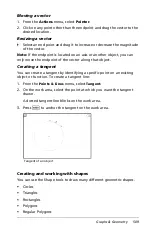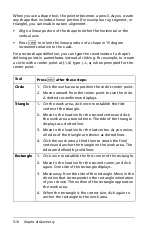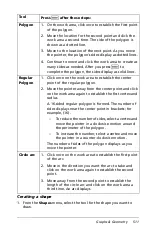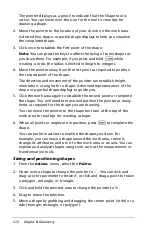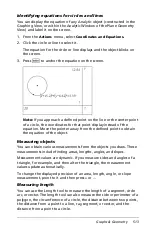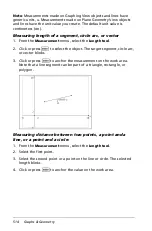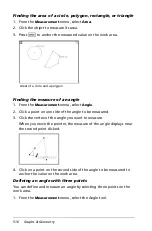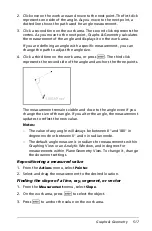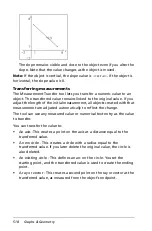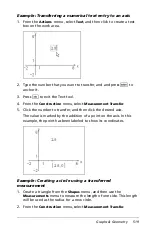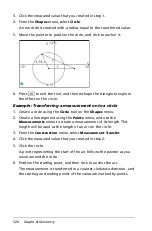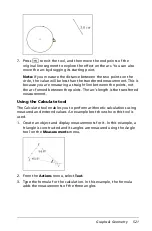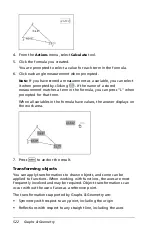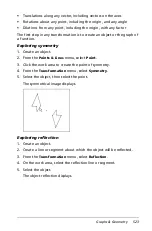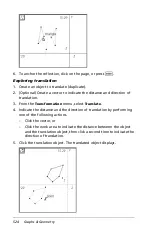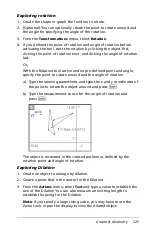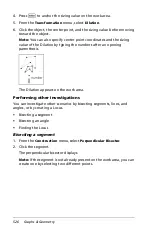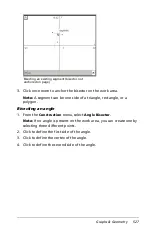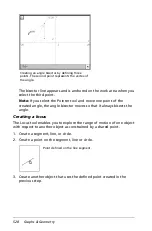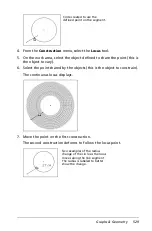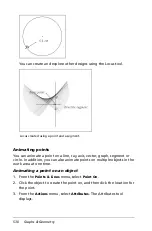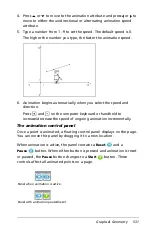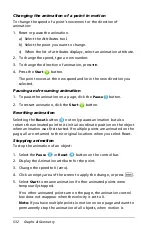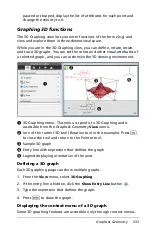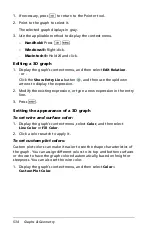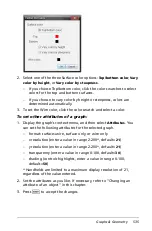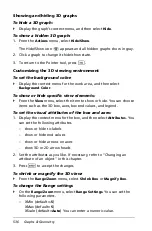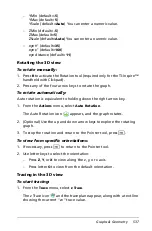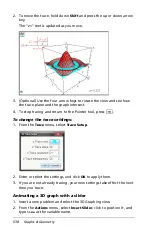
Graphs & Geometry
523
•
Translations along any vector, including vectors on the axes
•
Rotations about any point, including the origin, and any angle
•
Dilations from any point, including the origin, with any factor
The first step in any transformation is to create an object or the graph of
a function.
Exploring symmetry
1. Create an object.
2. From the
Points & Lines
menu, select
Point
.
3. Click the work area to create the point of symmetry.
4. From the
Transformation
menu, select
Symmetry
.
5. Select the object, then select the point.
The symmetrical image displays.
Exploring reflection
1. Create an object.
2. Create a line or segment about which the object will be reflected.
3. From the
Transformation
menu, select
Reflection
.
4. On the work area, select the reflection line or segment.
5. Select the object.
The object reflection displays.
Summary of Contents for TI-Nspire
Page 38: ...26 Setting up the TI Nspire Navigator Teacher Software ...
Page 46: ...34 Getting started with the TI Nspire Navigator Teacher Software ...
Page 84: ...72 Using the Content Workspace ...
Page 180: ...168 Capturing Screens ...
Page 256: ...244 Embedding documents in web pages ...
Page 336: ...324 Polling students ...
Page 374: ...362 Using the Review Workspace ...
Page 436: ...424 Calculator ...
Page 450: ...438 Using Variables ...
Page 602: ...590 Using Lists Spreadsheet ...
Page 676: ...664 Using Notes You can also change the sample size and restart the sampling ...
Page 684: ...672 Libraries ...
Page 714: ...702 Programming ...
Page 828: ...816 Data Collection and Analysis ...
Page 846: ...834 Regulatory Information ...
Page 848: ...836 ...

